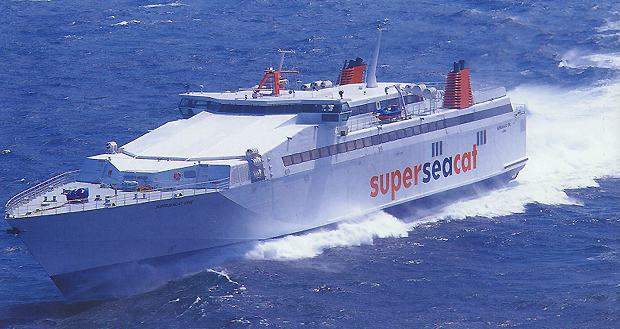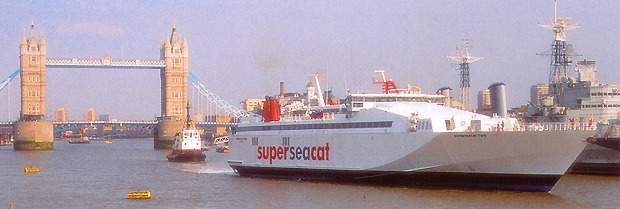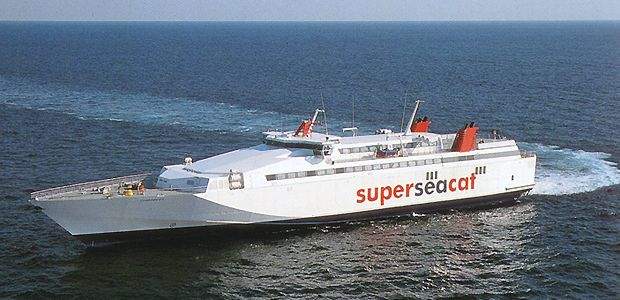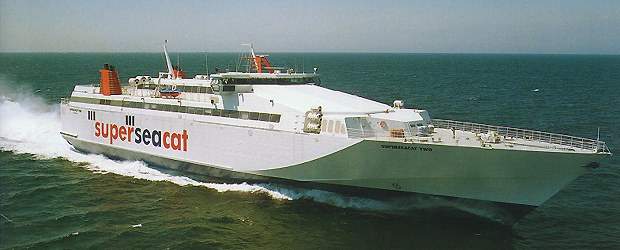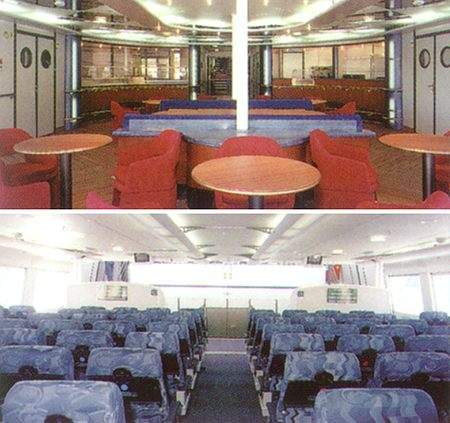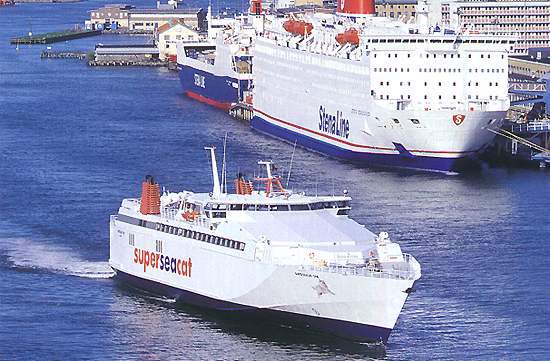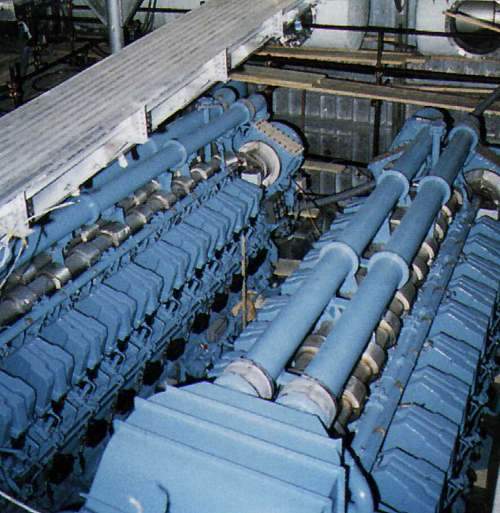The SuperSeaCats are 100m-long, mono-hull fast ferries, built by Fincantieri at their Maggiano and Riva Trigoso shipyards. The first was launched in 1997. The ferries are owned by Sea Containers Italia Srl and are operated by Sea Containers’ subsidiaries on the following crossings: Liverpool, England – Dublin, Republic of Ireland (Isle of Man Steam Packet); Newhaven, England – Dieppe, France (Hoverspeed); Belfast, Northern Ireland – Heysham, England (Sea Cat); and the latest route, Helsinki, Finland – Tallinn, Estonia (Sea Containers Eesti OU).
DESIGN
The overall length of the deep-V hulled vessel is 100m. It has a 17.1m beam, depth of 10.7m, draught of 2.75m and dead-weight of 340t. The hull and superstructure are fabricated from various aluminium alloys instead of from high-tensile steel. The superstructure design is arranged in three longitudinal sections, linked by expansion joints to accommodate flexing movement in the hull/deck structure. While the main hull plates are welded, the use of thinner material in the superstructure called for the extensive use of riveting.
The SuperSeaCat incorporates permanently deployed active T-foil ford, transverse hull stabiliser fins and transom-mounted trim tabs supplied by Maritime Dynamics and Vosper Thornycroft. Model tests were carried out at the Danish Maritime Institute at Lyngby. These results showed that even in full load conditions and worst case damage, no water entered the vehicle garage in wave heights of up to 4m. As the SuperSeaCat is a monohull, there is no danger of asymmetric flooding.
FACILITIES
The twin-level vehicle decks can accommodate up to 175 cars. Vehicle loading and discharge is carried out through twin stern doors. Axle loads up to 30kN can be accommodated at the aft main vehicle deck and in the wing lanes of the upper vehicle deck.
The SuperSeaCat has a capacity for 782 passengers and 26 crew. Passenger accommodation is located over two levels. The main passenger deck provides airline-style seating for 628 passengers in two lounges and the aft bar/cafeteria area. A club class lounge is located at the aft end of the upper passenger deck.
The upper level contains a casino and a bridge observation, together with seating for 96 passengers. There is also a window bar and cafeteria, cappuccino bar, amusement zones, mother and baby room and a duty-free shop.
PROPULSION
The SuperSeaCat has two main engine rooms, which can operate independently. It is powered by four Ruston 20RK270 diesel engines. Each engine is rated at 7,080kW to give a service speed of 38 knots at full displacement, and the vessel has a maximum continuous speed of 40 knots at full load.
Each main engine drives a KaMeWa S112 waterjet unit via a Renk PLS 50z reduction gearbox. All four waterjets are fitted with hydraulically operated steering nozzles and reversing buckets. A Brunvoll FU-45 LTC 1225-330kV bow thruster is fitted to supplement berthing manoeuvres.
Electrical power is provided from three 340kW generators that are located in a single auxiliary machinery room. Emergency generating power is approximately 100kW.
AUTOMATION AND CONTROL
The engine and vessel systems are monitored by a 1,500 channel computer-based control and monitoring system. Amongst the facilities on the integrated bridge system are a Racal Decca X-band C342 radar and a Racal Decca S-band C342H radar. There are two Chartmaster CM200R electronic charts and a Navipilot V/G autopilot system. There is a Navigat gyro compass, a LAZ 500 echo sounder. Using an internal TV surveillance system that is also located on the bridge, the crew can monitor both the engine rooms and the vehicle decks throughout the crossing.
The SuperSeaCat has a NT200 D DGPS and GPS link. Equipment also includes a Skanti VHF/FM and HF/SSB radiosystem and Satcom C.

